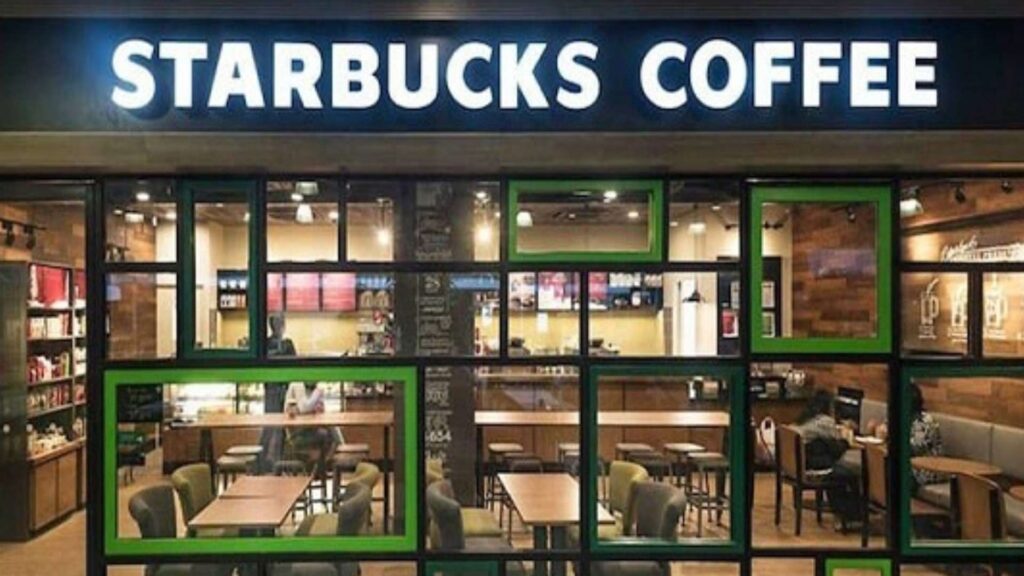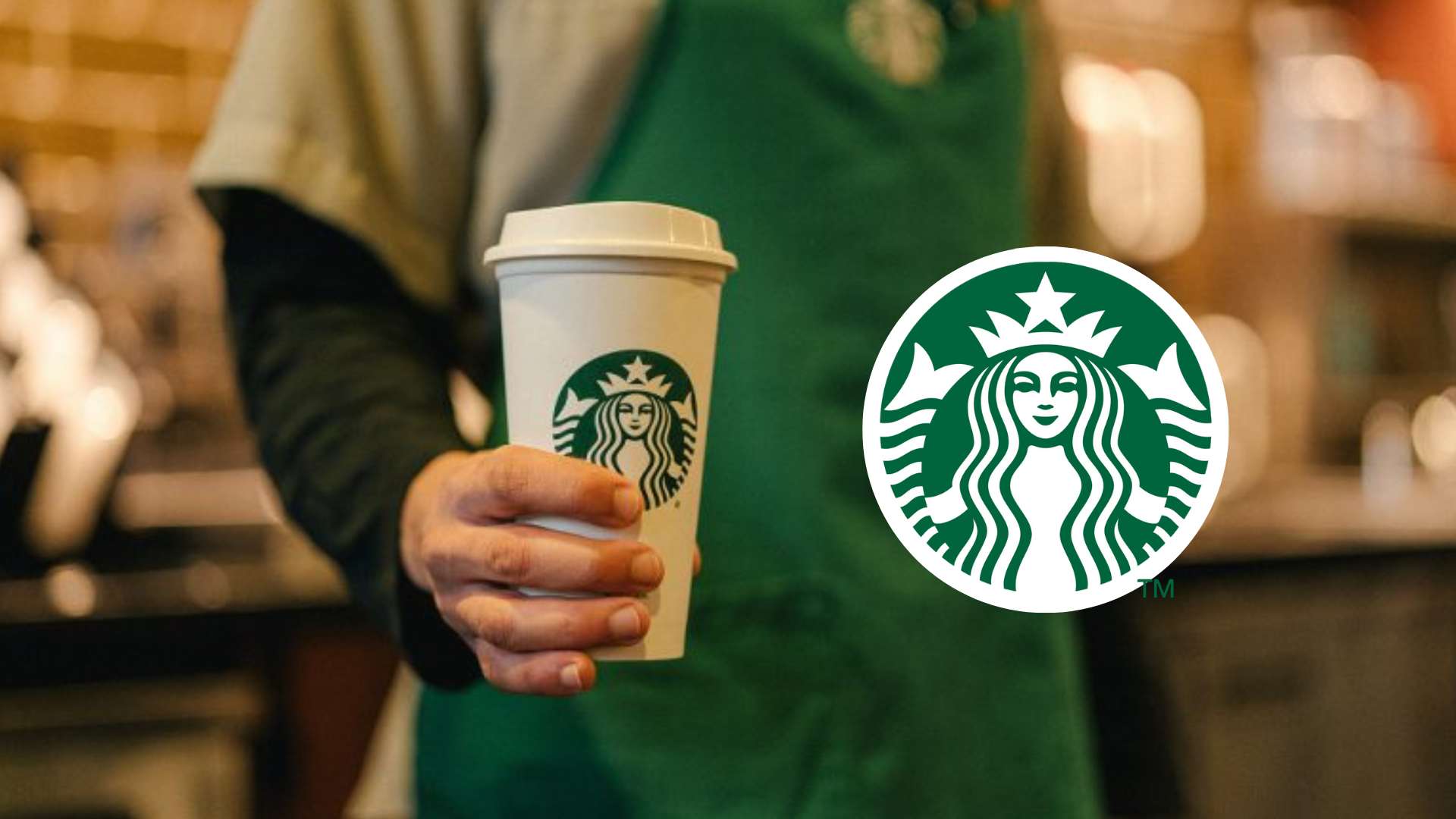Considering the international scale coffee makers and roasters, Starbucks is a brand ringing a bell to millions. Starbucks has become not only a national but also an international coffee trademark with joint collaboration with Tata Consumer Products, making its foray into India. That is mainly due to its high quality and selection of coffee and a cosy atmosphere that became a hallmark of the brand. The company reported a 33% revenue growth in the last fiscal year, doubling profits year-on-year while crossing the ₹1,000 crore milestone. As of now, branded coffee markets are posting about 15-18% CAGR growth rates.
Due to a rapid expansion of outlets in urban centres, it has become popular with the working population, students and lovers of good coffee. From this, many business people have looked for ways and means of owning a franchise in India due to the network’s excellent brand image and client base.
This article explores more on the Starbucks franchise cost in India, why it is still a viable opportunity for franchisees and what they stand to benefit in the same.
Why Starbucks Business is Popular in India?

There are several reasons that can be pinpointed to understand how Starbucks achieved success within India. First, the country is the ideal demographic, and the growing middle class actively consumes premium products in given offers to the consumer, not just coffee—but an upscale experience. Outlets are physically decorated to be work, communication, and recreational spaces, a factor that resonates with the urban market seeking comfort.
Also, the company benefits from a very positive brand image, which is favorable for the global market, and from its concentration on ethical sourcing, which aligns with the growing awareness of many Indian consumers who are more sensitive to social and environmental issues. The company’s focus areas include sustainability, community, and premium quality, which aligns with the new thinking of Indians.
With the increasing trend of the young generation inclining towards coffee, especially in urban cities, business has grown well. Because coffee is quickly entering the daily routine of many people in cities, it is able to offer professionals, students, and coffee lovers a high-quality and international experience.
Starbucks Franchise Cost in India plays a significant role in this growth. The combination of a strong brand image, sustainable practices, and a focus on customer experience makes it an attractive investment for entrepreneurs seeking to tap into India’s expanding coffee culture.
Starbucks USPs
The granting of a distinctiveness to the Starbucks selling proposition is due to the concept of the ‘third place’—an inviting location between home and work in which customers can enjoy premium coffee experiences. This line of thought and several distinctive things give the company its success in India:
- High-Value Products: Starbucks sources high-quality Arabica coffee beans, including local Indian beans sourced through partnerships with Tata Coffee.
- Allows for Customization: The brand has options for maximum customization for the beverages’ preparation, fitting the Indian palate.
- Store Ambience: Stores are aesthetically minded inside, equipped with mellow seating, available Wi-Fi, and a few design trinkets that speak of the culture.
- Service Excellence Delivered: To assure consistency in service from outlet to outlet, Baristas, or “partners,” are trained to operate as equals.
- Brand Adaptation: Examples of menu items that have been introduced by Starbucks in order to attract local consumer preferences are Masala Chai, Cardamom Chai, and vegetarian food items.
History & Growth Rate
Established in Seattle, Washington, USA this coffeehouse franchise was established in 1971 and currently has more than thirty thousand stores in the world. The brand refers to the best coffee, new products, and good attitude towards customers. Popular for its ethical sourcing policy, the company uses only the best quality coffee beans with consideration of the impacts of its operations to the environment.
In India the brand has grown in partnership with Tata Global Beverages under Tata Starbucks Private Limited. This partnership has helped the rapid expansion into the Indian market, taking advantage of Tata’s established knowledge about the Indian buyer and the market in general.
The brand has been able to establish a niche of premium coffee culture across major urban cities targeting its customers whilst at the same time upholding sustainability and sourcing of beans.
On Tata Starbucks, one can rely on consistent growth rates:
- FY 2022-23: Revenue ₹836 crore (32% YoY growth).
- FY 2023-24: Revenue more than ₹1,100 crore (33% YoY growth).
- FY 2024-25 (expected): To cross ₹1,400 crore.
Profits were registered for the first time during FY 2021-22 and have doubled since, suggesting the maturation of the company’s business model in the Indian market in the face of rising competition from domestic coffee chains.
Why Consider a Starbucks Franchise?
- Global Brand Recognition: You should understand the clout of the Starbucks name worldwide; instant recognition and trust from customers is simultaneously a boon for Starbucks.
- Proven Business Model: This is yet another excellent opportunity to benefit from a time-tested operational framework that has been perfected in over 34,000 stores worldwide. The proven success of Starbucks makes the Starbucks Franchise Cost in India a worthwhile investment for entrepreneurs.
- Comprehensive Training: The world-class training in the Starbucks partner system covers everything from brewing coffee to customer service excellence.
- Supply Chain Advantage: Use the Tata partnership to your advantage, leveraging Starbucks’ supply chain network to ensure consistent product quality and availability.
- Icon for Innovation: Closest Support – Regular updates will be provided on innovations in product development, marketing, and technology.
- Community Connection: You will also be directly involved in Starbucks’ community-welfare initiatives, which will greatly amplify relationships at the local level and strengthen customer loyalty.
Understanding the Starbucks Business Model in India
Starbucks in India operates as a joint venture with Tata Consumer Products, working together on a 50:50 basis through Tata Starbucks Private Limited. Such a setup has been in existence to guide entrepreneurs working with the brand along the following lines:
In India, Starbucks is using a licensing model rather than actual franchising. Under the licensing model, Tata Starbucks retains control of operations in general, while allowing selected partners to operate Starbucks-branded stores in specific locations.
Stores licensed by Starbucks can carry out operations only under supervision and with strict adherence to Starbucks’ operational guidelines, store layout, and product offerings.
Licensees typically pay initial fees, ongoing royalties based on sales percentage, and marketing contributions. Tata Starbucks lays down the guidelines for store design and provides operational support during store set-up.
Each licensed location enjoys territorial protection to avert possible conflicts. Audits and evaluations are done regularly to ensure uniformity of all locations and to protect the brand. All inputs and branded merchandise must be procured only through approved Tata Starbucks channels
Starbucks Franchise Cost in India
Setting up a licensed Starbucks outlet means dealing with in-depth financial planning across a broad range of cost categories.
Pre-Opening Costs:
- License Fee: ₹20-30 lakhs (one-time)
- Real Estate: ₹80 lakhs to ₹1.5 crore (security deposit + advance rent)
- Store Build-out: ₹70 lakhs to ₹1.2 crore (construction & design)
- Equipment: ₹40-60 lakhs (coffee machines, refrigeration, etc.)
- Initial Inventory: ₹8-12 lakhs (coffee beans, food items)
- Training: ₹5-8 lakhs (staff training)
- Legal/Admin Costs: ₹3-5 lakhs (permits, licenses)
Additional Pre-Opening Costs:
- License Application Fee: ₹5-7 lakhs (non-refundable)
- Site Selection: ₹3-5 lakhs (site analysis)
- Architectural Planning: ₹10-15 lakhs (store design)
Capital Expenditure:
- Construction & Interiors: ₹1-1.3 crore (₹70,000-90,000 per sq meter)
- Kitchen Equipment: ₹25-35 lakhs
- Coffee Equipment: ₹15-20 lakhs
- Furniture/Fixtures: ₹20-30 lakhs
- Technology Systems: ₹8-12 lakhs
Recurring Operational Costs:
- Royalties: 6-8% of monthly gross revenues
- Marketing: 1-2% of monthly gross revenues
- Training: ₹1-2 lakhs quarterly
- Compliance Updates: ₹3-5 lakhs annually
Estimated Total Cost: ₹2.65 crore to ₹4.47 crore (approx.)
Requirements to Open a Licensed Starbucks Store in India
First Know About Starbucks Licensing Agreement
- Contract Length and Renewal: A typical contract lasts for approximately five to ten years, although flexibility exists in renewing, based on performance metrics, compliance history, and market conditions.
- Geographic Territory Exclusivity: Licenses are typically given specific geographic territory protection, most commonly within 1 to 2 kilometers in areas in which intra-brand competition should not occur or in urban areas.
- Fee Structure: It covers deep-fee arrangements such as initial license fees, royalties, which commonly rank from 6 to 8 percent from gross sales, and also marketing contributions that generally fall between 1-2 percent from gross sales.
- Training Requirement: All management staff must undergo Starbucks University programs as prerequisites; baristas must hold standardized training protocols before opening store outlets.
- Quality Assurance: A licensee will submit to a program of scheduled or surprise audits based on operations. They will also have to remediate any compliance lapses before the operation is terminated.
- Exit Conditions: The agreement outlines specific events that give either party the right to terminate the relationship, including performance thresholds, standards violations, and restrictions on ownership transfer.
Space and Location Requirements
Indeed, one of the most important factors that contribute to a positive result for a coffee shop franchise business model is location selection. The outlet should be preferably located at places with much traffic like shopping centers, airport, or main city areas, which attract a crowd on their own. Sites close to business developments, main roads, or densely populated areas are well-loved because passersby are continually constant throughout the course of a day.
The size of the café or a coffee outlet is between 1000 and 1500 sq. ft, providing adequate space for seating, specialty lighting and free circulation space for the clients. Customers’ comfort is an effective way to ensure that they spend more time in business premises and therefore the design should suit both an individual and a group.
Bulk franchises should be established in areas that are easily recognizable by consumers and easily accessible by customers. Ideally positioned in terminals such a business setups, shopping centres, or lifestyle nodes, ensures foot traffic pick-up, with more likelihood of return traffic and incidental visits. As it becomes clear, the locale with a well-designed area plays a crucial role in the success of the outlet, regardless of the target consumers’ class, including working people and ordinary strollers.
Training and Support from Starbucks
Training and development is one of the best activities that Starbucks has when it comes to training franchisees and its workers. When you invest in a its franchise, you receive comprehensive support in areas like:
- Operations Training: Such guidance can encompass virtually all aspects in an endeavour in order to ensure the franchisees effective management of the outlets.
- Barista Training: This implies that training of barista to deeper levels contains customer satisfaction by preparing quality coffee within the various outlets.
- Customer Service Excellence: This requires unbeatable customer relation services in order to ensure that each of the stores is warm.
- Marketing Support: Marketing cons include brochures and other writing materials, public relation copies and social media strategies, and promotions which keep brands in the faces of consumers and organisations.
- Supply Chain Management: The current supplier networks mean that the organisation gets quality coffee and foods at all times.
- Ongoing Education: There is also a series of staff training among the staff activities which help them to get acquainted with new products, new brewing processes, and new tendencies on the market.
- Operational Manuals: Business routines are provided in the store operational manuals to verify the variations in operations of the stores.
- Technology Support: Training involves a minor component of the technology interface that the Starbucks company has developed to take orders from its customers.
- Community Engagement: Details concerning where retailers turn to for guidance on how to target stakeholder groups and the community, and where they can vest their efforts to get clientele loyalty.
- Feedback Mechanisms: Through feedback systems, franchisees already have preset structures for making adjustments to the standard routine and customer service provision.
How to Apply for a Starbucks Franchise? Step-By-Step Guide
The interested individual can start by going directly to the Tata Starbucks website or fill in the franchise inquiry form. The documentation process involved in your application will include details of your means, business experience and location of the intended outlet.
Write a great cover letter; This letter should summarise your insights of the brand, its jewel and your perspectives of the franchise. Both externally and internally, this proposal should be able to describe your commitment to quality and your customers.
You also may be invited to further talk about your initial application being presented and answering further questions which the franchising team can have about your potential. If granted, you’ll go ahead and commit to the legal uptaken franchise agreement and get down to the business of opening your outlet. Preparation and a clear business model coupled with strategy can go a long way in the process.
Starting a Starbucks franchise in India involves several steps:
- Research and Market Study: The fourth step is to carry out a detailed study of the existing local coffee market with particular focus on opportunities and measures of competition.
- Contact the Franchise Owner: Contact the official body, which oversees franchising of the brand that you are interested in for a particular region.
- Submit a Business Proposal: They may also require you to write and defend an elaborate business plan that describes your concept, market, method of operation, and anticipated revenues and costs.
- Attend a Meeting: If your proposal is acceptable they would then arrange to see you and set out the further expectations in franchise agreement.
- Finalise the Agreement: Study and finalise the signed franchise agreement and pay all the necessary franchise fee as to get the rights to operate the business.
- Location Selection: There is also the need to choose a prominent outlet strategically in order to appeal to the brands clientele.
- Store Setup: Ensure that the outlet is established in conformance with the brands protocols and standards as designed and agreed by their team.
- Staff Recruitment and Training: Recruit and orient people to the company and product/brand to prevent adverse views and actions from affecting the business.
- Launch and Operate: Finally get all the technicalities into place, start formally operating the outlet and always prioritise quality and customer satisfaction.
Starbucks Profit Potential & ROI
A Starbucks franchise in India can offer strong financial returns, with profitability depending on location, market conditions, and operational efficiency. Here’s an overview of the potential revenue and profit margins:
Potential Revenue:
- Average Revenue (Regular Store): ₹2.5-₹4 crore annually in prime locations.
- High-Performance Flagship Stores: ₹5-7 crore annually.
- Average Transaction Size: ₹400-₹500 per customer.
- Daily Customer Footfall: 300-500 customers in urban locations.
Return on Investment (ROI):
- Break-even Point: Typically achieved in 24-36 months.
- ROI Recovery: Around 4-6 years to recover the total initial investment.
- Annual ROI: 15-22% after the stabilization period.
Revenue Sources:
- Beverages: 65-70% of total revenue.
- Food Items: 15-20% of total revenue.
- Merchandise & Packaged Goods: 10-15% of total revenue.
Overall, Starbucks franchises in India are expected to generate significant returns, with a steady increase in profitability as the store stabilizes, offering long-term growth and a robust ROI.
Factors Affecting ROI
Multiple factors affect the return on investment for a licensed Starbucks outlet in India, which prospective licensees have to analyze:
Location Characteristics:
- Foot Traffic Density: A prime location with 10,000 or more footfalls per day can earn revenues that are 30-40 percent higher than those of secondary locations.
- Demographic Profile: Middle to upper income with young professionals and college students tend to do better.
- Competitive Landscape: Being near complementary rather than competing businesses can help performance.
Operational Efficient:
- Staff Productivity: Well-trained staff can increase throughput by 15 to 20 percent during peak service hours.
- Inventory Management: Good inventory management can keep wastage down to 3 percent from 7 percent.
- Speed of Service: Streamlined work processes can lead to a 10-15 percent increase in transaction volumes during peak periods.
Market Development:
- Local Coffee Culture: Establishments typically see a quicker return to profitability, 6-8 months faster, in regions that exhibit established coffee consumption habits.
- Brand Visibility: Initial marketing effectiveness can allow access to customers 20-30 percent faster.
- Attunement to Local Preferences: Stores that achieve a fine balance between global standards and local tastes usually enjoy 10-15 percent higher return rates from customers.
Cost Control:
- Rent-to-Revenue Ratio: Ideally kept below 15-18 percent of total revenue.
- Labor Costs: Optimally kept at 18-22 percent of revenue through predictive scheduling.
- Utility Expenses: Energy-efficient operation can save more on utility bills, usually between 10 and 15 percent.
Challenges of Owning a Starbucks Franchise in India
- High Initial Capital: This implies a specific sum of capital investment (Starbucks Franchise Cost in India ₹2-4 crores) that will result in a significant burden, leading to a delay in the break-even period compared to other food-retail options.
- Operational Control Disallowances: The licensing agreement restricts autonomy in terms of menu creation, store design, pricing strategies, and even supplier selection, with strict adherence to corporate health standards.
- Challenges in Premium Positioning: Preserving Starbucks’ premium pricing model becomes very difficult in a price-sensitive market like India, particularly in smaller towns, such as Tier-2 and Tier-3 cities, where coffee culture is still evolving.
- Space Constraints: It does become a challenge in a highly competitive commercial real estate market like India to find sites falling under Starbucks’ exact standards for measurement, visibility, and demographics.
- Retaining Staff: Since baristas incur high training costs, their loss becomes a significant expense for the company, making it crucial to implement retention strategies in this sector, which is known for its high attrition rates.
- Supply Chain Complications: Although the Tata partnership offers some benefits, licensees also face and overcome occasional supply problems related to imported ingredients, while ensuring the brand’s global quality standards are maintained.
Pros & Cons of Owning a Starbucks Franchise
Pros:
- High brand recognition
- Premium pricing and higher margins
- Extensive franchisee support and training
- Sustainability and ethical sourcing
Cons:
- High initial investment
- Stiff competition from local and global coffee chains
- Continuous operational costs (rent, staff, supplies)
- Strict adherence to brand guidelines
Who are the Competitors of Starbucks?
- Café Coffee Day (CCD): CCD is the fastest growing coffee chain in India and was started in 1996 by V.G. Siddhartha. CCD has closed down many of its cafés because of financial problems and stiff competition which has seen it reduce its outlets to over 1,700 across the country.
- Barista: Barista is one of the leading coffee chains operating in India since 2000 is credited for introducing café culture in the country. Barista has grown dramatically over the years and currently has approximately 400 outlets, and the company’s vision is to have 800 outlets over the next twenty years.
- Third Wave Coffee Roasters: Three Wave Coffee Roasters is a new generation coffee retail chain in India specialising in gourmet coffee. According to the mid-2024 data, the company has established 108 points of sales and has a vast further growth strategy, including the opening of 50 new stores and tripling the roasting capacities by the time of the year.
- Blue Tokai: With its beginning from New Delhi, initiated by Matt Chitharanjan and Namrata Asthana in 2013, Blue Tokai Coffee Roasters has quickly gained popularity and respectability in the Indian specialty coffee market. It was born out of home roasting and has expanded to open about 130 stores in key cities in India and has recently opened its first overseas coffee shop at Tokyo, Japan.
Conclusion
It becomes quite an attractive market for investing in a coffee franchise, more so, since people in the country are choosing premium coffee experiences. As with the previous form, there isn’t franchising, however, the opportunity to become a licensed operator, where the client receives a familiar brand and a vast number of aids. Although the initial Starbucks franchise cost in India is high, it is followed by an equal or greater opportunity for good returns provided that the unit is well managed and well located.
That is why aspiring candidates for job opportunities are those who embrace and appreciate the brand’s focus on quality and sustainability and more specifically are active in major cities successfully developing coffee culture.
Through proper following of regulatory procedures, there are a number of positive steps that can be followed to successfully achieve entry into the lucrative coffee market as a franchisee. Done right, this is not only an investment- it is a business opportunity to be part of a constantly growing and adapting industry.
Explore How to start cloud kitchen business.
FAQs
1. How much does a Starbucks franchise cost in India?
The Starbucks franchise cost in India ranges between INR 1.5 crore to INR 2 crore, depending on the location and store size.
2. Is Starbucks profitable in India?
Yes, it has seen significant growth in India, and its franchises can be highly profitable with the right management.
3. How can I apply for a franchise?
To apply, you need to contact Tata Starbucks directly and submit a business proposal outlining your plans and financial capability.
4. What is the ROI for a Starbucks franchise?
The ROI varies but typically, franchisees can expect to break even within two to three years, with profit margins ranging from 15% to 25%.
5. Who are the main competitors of Starbucks in India?
The main competitors in India include Café Coffee Day, Barista, and Blue Tokai, among others.
6. Who is the CEO of Starbucks?
Since September 2024 the ceo of Starbucks is Brian Niccol who joined the company after succession with Laxman Narasimhan.
From 2018 right up to 2024 with his tenure at the helm, this Chipotle’s revenues have more than close to double and profits rising almost sevenfold.



